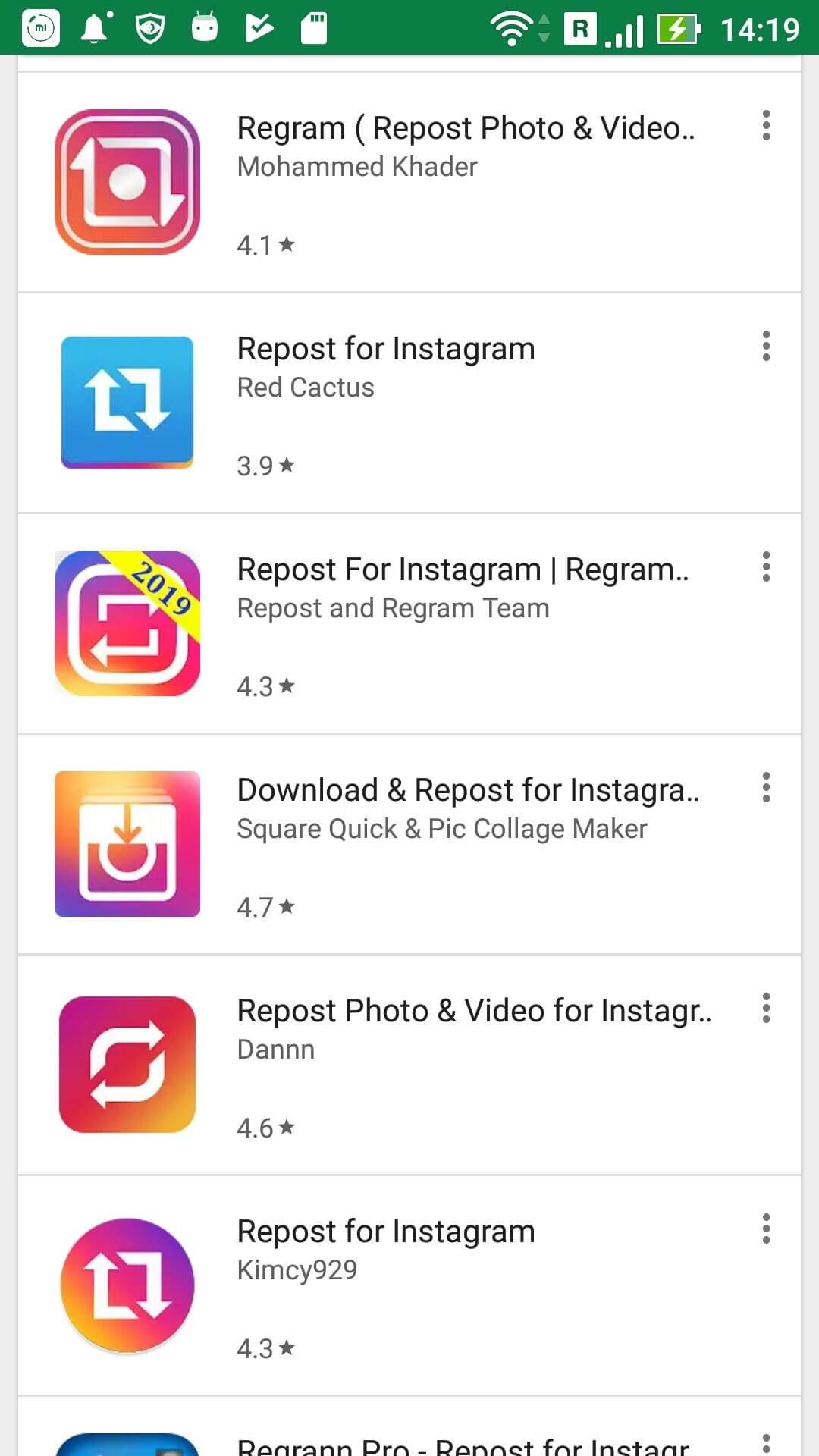#SocialRecap 19: Will Facebook’s huge supply of user data help you find true love? Plus more social media updates!
In the last #SocialRecap, we covered some important developments from Google, including their plans to get rid of the URL – changing the way we access websites for good. Plus, we shared 5 simple but important LinkedIn profile tips that are recommended by top career specialists to help recruiters find you during your next job search.
This time, we’re looking at:
- Instagram’s focus on ecommerce,
- Facebook’s latest venture in the world of online dating,
- How Amazon, Salesforce and Facebook are innovating with audio & visual powered AI (and why you need to get onboard with tech now!)
- All this and more inside episode 19 of the #SocialRecap!
Watch the #SocialRecap on YouTube OR scroll down to keep reading:
Now, let’s start with some social media updates from Instagram!
1. Instagram focuses on e-commerce… with a totally separate app?
Instagram has been super productive lately – they’ve been spotted testing a string of feature updates for their users, including:
- a native way to regram
- hashtag-free image captions
- geo-targeting for their users
- and the addition of .GIFs in direct messages
Phew! But their biggest update comes in their latest push towards ecommerce: there are over 400 Million accounts using Stories on a daily basis, and out of those 400 million, one-third of the most-viewed stories come from business accounts – so it makes perfect sense for Instagram to make both feed posts & Stories shop-able.
But they’re doing even more.
They’ve also started rolling out a new Shopping Channel in the Explore tab, where you can see shoppable posts from brands that you follow, as well as from brands that Instagram thinks you’ll like.
However, at its core, Instagram is still a social platform, a place for people to learn more about one another, albeit through images. This is why Insta is also looking into building a standalone shopping app, one that would help separate further e-commerce endeavors from Instagram itself.
2. Instagram tests a native re-gram feature
And although it might sound contradictory, keeping the focus on their users is also why users still don’t have an IG re-gram option. After all, Facebook has a Share button, Twitter has the Retweet, and even LinkedIn has a ‘Share-to-feed’ option. But Instagram has held back, trying to keep Instagram-ers focused on each other, instead of finding stuff to share.
Despite that, users have been getting around this by sharing screenshots and using external apps (risking security issues & potential data leaks by using phishy-looking apps).

So now, among all its other tests and trying to build a new shopping app, Instagram is also testing different ways for users to regram each others’ posts, natively.
3. Twitter secretly tries out a ‘dislike’ button
And Instagram isn’t the only one testing new features – a new ‘dislike’ button was recently spotted on Twitter (as ‘I don’t like this tweet’).
Forums like Reddit and Quora have long embraced the downvote, while Facebook has been slowly rolling out its own ‘dislike’ option to a small group of users since May. Twitter has only just begun to test their own version of the ‘dislike’ – and it’s still not at all certain that it will ever see the light of day.
But just the fact that they’re considering this tells us that we may also be seeing some other changes related to their algorithm soon. After all, the very need for a ‘dislike’ suggests that Twitter’s algorithm isn’t showing their users what they actually want to see, which is why they’re looking for more user input – in the form of a downvote button – so their algorithm can gather more information about what their users want.
4. Facebook Dating has arrived – will Facebook’s giant collection of user data help us find true love?

Facebook has officially launched their Dating feature! And considering all the data that Facebook has on us, this might actually be a great way to find a good match. It’s only available in Colombia right now where they’re currently collecting sign-ups, so they still have a chance to iron out any kinks before offering it to other countries, and this is how it’s supposed to work:
Right after you sign up for Facebook Dating, you’ll be asked to verify your location, and then you can fill out personal details (like a short bio, where you work, your religion, whether or not you have kids – things like that) and answer some questions related to your personality. The key thing to keep in mind here is that you’re creating a brand new profile for Facebook Dating, instead of just using your original Facebook profile, so you get to show a different side of yourself.
When you’re looking through the matches that Facebook finds for you, you’ll see them one-by-one, and you can express interest in up to 100 matches a day. Unlike Tinder, Facebook Dating is about finding a life partner instead of a hook-up, so there’s no “swipe-right” function here. If you’re interested in someone, you’ll just have to be brave and make the first move by sending them a message and seeing if they respond.
Facebook has a few basic controls in place, to help moderate the dating scene:
- Your age and location are not self-described and require verification – this is to help prevent catfishing.
- Messaging occurs in a separate Facebook Dating chat section, not inside Facebook Messenger, to keep Facebook Dating and regular Facebook chats with friends separate.
- You won’t get matched up with people you’re already friends with – just friends of friends, or strangers. The idea is, if you’re already friends, then you shouldn’t need a dating app to start dating.
- You can NOT follow up with people who don’t respond to your message – this is to prevent stalking and harassment.
- Users cannot send photos in the Facebook Dating Chat – so no fear of receiving inappropriate dick pics (thanks for that one, Facebook)!
5. Facebook finds & bans offensive images with new visual search AI Rosetta
Besides the Dating feature, Facebook has also just launched Rosetta, which is visual search AI that they built to help read text in images. Basically, Rosetta can find images that contain text in various languages (like offensive memes), and it can also read what that text says.

Rosetta’s main purpose is to identify offensive memes or other images that violate their policies or spread hate speech – something that Facebook is in desperate need of after images containing mistranslated text were connected to causing riots and acts of extreme violence in Myanmar, Sri Lanka & other areas of conflict. Hopefully, Facebook’s new visual search AI Rosetta offers improved accuracy in reading & understanding text.
6. Scout lets Amazon shoppers find items visually, like on Pinterest
Meanwhile, Facebook definitely isn’t the only one working on visual search, as Amazon launches Scout – their way of letting users shop for items in a more visual way.
You might be thinking ‘What for? We can see images in Amazon already’. The main difference is that with Amazon Scout, you can teach Amazon to show you items based on your personal tastes.

Right now, if you search for something like a table on Amazon, you’d be shown all kinds of styles: modern, classic, old-fashioned, wooden, plastic, hand-crafted or industrial, etc.
If you look for a table through Amazon Scout, you can ‘like’ & ‘dislike’ each table you’re shown and teach the visual search AI to filter out stuff that’s not your style, so that when you shop for items in the future, it can potentially find things you’ll actually want to buy – right off the bat.
7. Salesforce goes hands-free with Einstein Voice
But visual search isn’t the only – or the most significant – way that brands are innovating these days. While Google Assistant has just become the first bilingual virtual assistant for the home and office, Einstein Voice is Salesforce’s new conversational way for salespeople to make notes and track their stats just with their voice.

If you work in sales, people skills are your most important asset: talking to people, listening to people, and meeting with them.
But you have to keep track of your stats too.
Einstein Voice now lets you enter all that data into the Salesforce dashboard with your voice, so you can deal with the administrative part of your job even while you’re driving. Salesforce isn’t the first CRM to offer conversational AI, since companies like Tact.AI have had this option for a while, but it’s definitely an industry leader, which speaks volumes about the direction in which technology is taking us. If your brand or business isn’t onboard with visual or voice technology yet – now’s a good time to start looking into it.
Keep up with the latest news in social media, business, digital marketing and tech!
Stay on top of key digital developments with the #SocialRecap – and make sure your social strategies are up to date.
Get your social media news the way YOU want it:
- Read about the latest highlights in social media news from the #SocialRecap right here on the blog
- Watch the FULL #SocialRecap on YouTube
- Catch the MINI #SocialRecap on Facebook (just the headlines + a few fun facts)
- Hear the #SocialRecap on Soundcloud (full version – audio only)
Recommended for you
- #SocialRecap 18: Fresh social media updates + 5 LinkedIn profile TIPS to help recruiters find you during your job search
- #SocialRecap 17: Top social news updates + 6 key best practices in email marketing
- #SocialRecap 16: How Alex Jones inspired a viral Twitter block list, new Facebook Live updates & MORE social media news!
Any other tools & topics that you want to hear about in the next #SocialRecap? Let us know and we’ll dig into it for you in the next Recap.
Tweet us or comment on any of the FB, YT or Soundcloud versions mentioned above – we’ll be listening!
Top Reads
Brand Monitoring: Tools & Guide for 2026
Brand Awareness Strategy [The Ultimate Guide for 2026]
The Best AI Hashtag Tracker and Other Hashtag Tracking Tools [2026]
Social Media Reach: How to Measure & Improve It in 2026?
X (Twitter) Analytics Tools: The 10 Best to Try in 2026
Sentiment Analysis: What is it & Why do You Need it in 2026?
Share of Voice: Definition, Calculation, Tools [2026 Guide]
Brand Reputation Management: 6 Expert Tips for 2026
A Complete Guide to AI Social Media Analysis [2025]
How to See How Many Times a Hashtag Was Used on X (Twitter)
Start Social Listening!
Get the Brand24 trial and start social listening like a PRO.